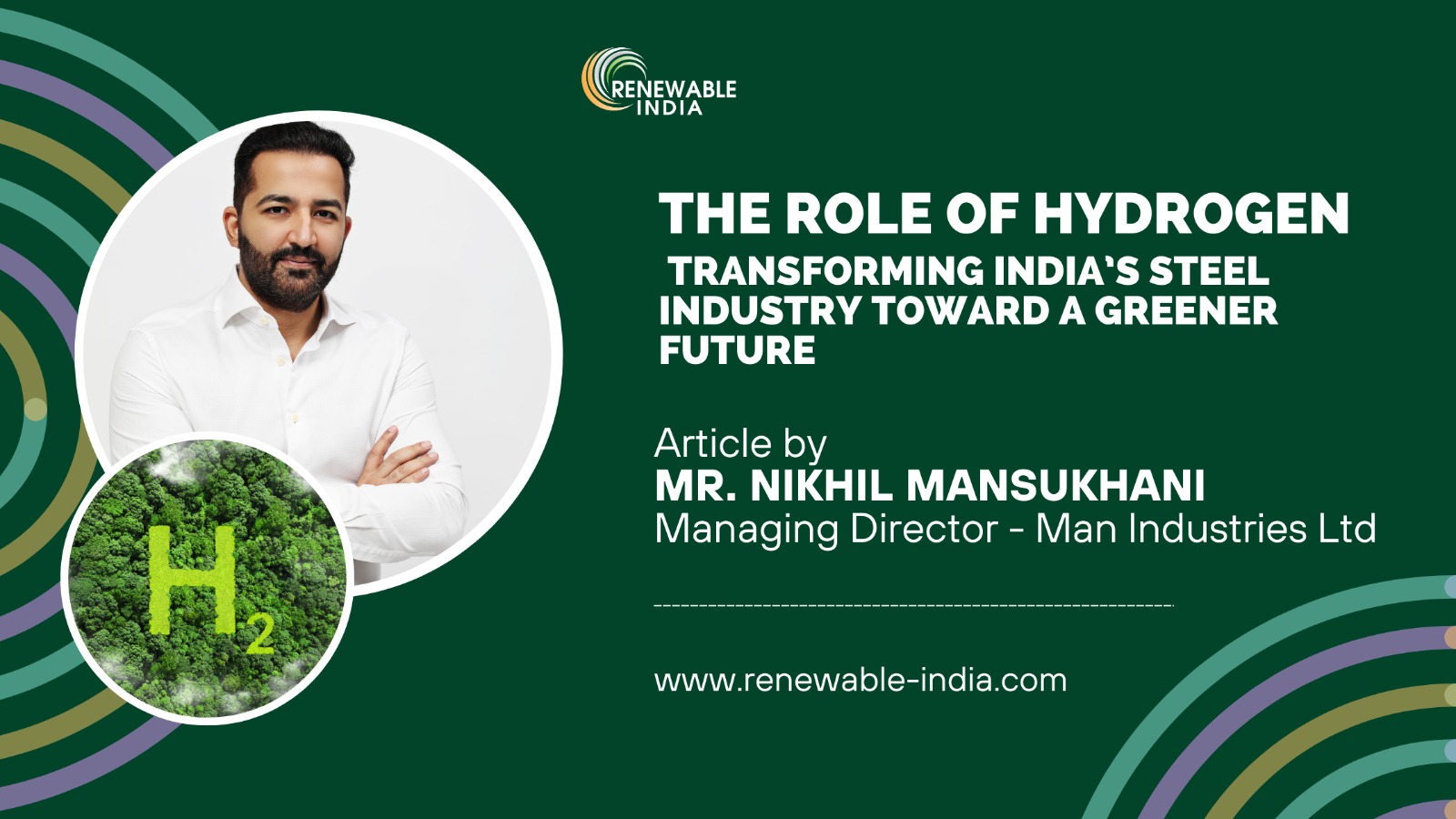
The global push towards decarbonisation has placed hydrogen at the forefront of the energy transition, especially in energy-intensive industries like steel. As one of the world’s largest steel producers, India is keenly aware of the environmental implications of traditional steelmaking processes that rely heavily on fossil fuels. To mitigate these impacts, India is turning to hydrogen—particularly green hydrogen—as a sustainable alternative. This shift holds immense potential not only for the environment but also for India’s economic and strategic positioning in the global steel industry.
Global hydrogen consumption is around 70 million tons annually, mostly “grey hydrogen” produced from fossil fuels with high carbon emissions. Although grey hydrogen dominates, the shift to cleaner alternatives like green hydrogen, produced via electrolysis using renewable energy, is gaining momentum. This transition is crucial for carbon-intensive industries like steel.
India, recognising the environmental and economic benefits of green hydrogen, has set an ambitious target to produce 5 million metric tons annually by 2030, along with adding 125 GW of renewable energy capacity by the same year. To boost the manufacturing of electrolysers, a proposed Production Linked Incentive (PLI) scheme worth Rs 15,000 crore is in place. Furthermore, the Strategic Hydrogen Innovation Partnership (SHIP) is driving research and development initiatives in green hydrogen production.
India’s steel industry is one of the largest contributors to the country’s carbon emissions, accounting for approximately 12% of total emissions. Traditionally, the production of steel relies on coal and natural gas, both of which have significant environmental impacts. The introduction of hydrogen, particularly green hydrogen, as a substitute for these carbon-intensive fuels presents a transformative opportunity.
The steelmaking process involves the reduction of iron ore to produce steel, and traditionally, this reduction is achieved using carbon-based materials, resulting in the release of carbon dioxide. However, when hydrogen is used as the reducing agent instead of carbon, water vapour is produced instead of CO2. This not only significantly reduces the carbon footprint of steel production but also positions India as a leader in sustainable steelmaking.
For hydrogen to become a viable solution for India’s steel industry, the development of hydrogen infrastructure is crucial. This includes the creation of hydrogen pipelines that can efficiently transport and distribute hydrogen across the country. Pipelines are the most cost-effective and efficient way to transport large volumes of hydrogen, especially over long distances. They play a critical role in ensuring that green hydrogen can be supplied to steel plants and other industries that require it.
India’s existing natural gas pipeline infrastructure presents a unique opportunity for hydrogen integration. By repurposing these pipelines for hydrogen transport, the country can accelerate the deployment of hydrogen across various sectors. However, this is not a straightforward task, as hydrogen has different properties compared to natural gas, such as being more prone to embrittlement of materials.
To address these challenges, pipelines need to meet specific technical standards. One such requirement is the application of 3LPP (three-layer polypropylene) coating, which protects against corrosion and mechanical damage. Additionally, liquid epoxy coatings are used to enhance flow efficiency and reduce the risk of hydrogen embrittlement. In some cases, concrete weight coating is applied to minimise the risk of pipeline movement and ensure stability.
Repurposing natural gas pipelines for hydrogen transport also facilitates the blending of hydrogen with natural gas. This allows for a gradual transition to a hydrogen-based economy, as blended hydrogen can be used in existing natural gas applications, thereby stimulating demand.
The development of hydrogen pipelines in India offers numerous economic and environmental benefits. From an economic standpoint, the transition to hydrogen can create new jobs in the hydrogen production, storage, and distribution sectors. Moreover, reducing reliance on fossil fuels can lead to significant savings on energy imports, bolstering the country’s economic resilience. From an environmental perspective, hydrogen offers a cleaner alternative to traditional fossil fuels, reducing greenhouse gas emissions and mitigating the impacts of climate change. By investing in hydrogen infrastructure, India can position itself as a global leader in clean energy and contribute to a sustainable future.
Hydrogen, particularly green hydrogen, offers a lifeline to India’s steel industry, enabling it to transition towards a more sustainable future. The development of hydrogen pipelines and the repurposing of existing natural gas infrastructure are critical steps in this journey. As India moves towards its ambitious green hydrogen targets, the steel industry stands to benefit from reduced emissions, lower costs, and enhanced global competitiveness. By embracing hydrogen, India is not only safeguarding its steel industry but also contributing to a greener, more sustainable future for all.
Budget 2024: India’s Green Hydrogen Revolution Takes Center Stage
Leave a Reply